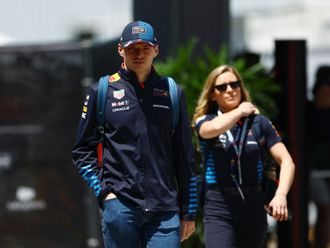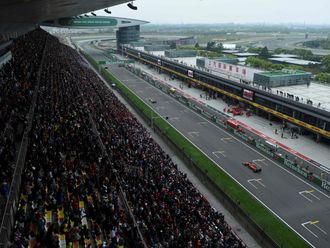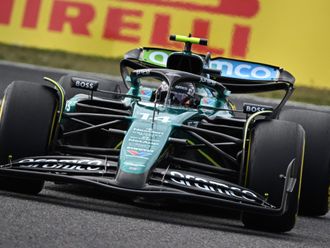
Picture in your mind the stereotypical British motorsport enthusiast. He’s elderly, wearing beige slacks and a navy blazer with a subtle motoring club insignia patch on the breast pocket. He speaks fondly of British Racing Motors and refers to his Jaguar XK120 as the “old girl”. He lives in the countryside and when he’s not attending historic hill climb events he’s speaking at the local village hall about Tory-friendly matters.
Now picture a stereotypical American motorsport enthusiast. He’s not quite as elderly, wearing jeans and a short-sleeve shirt sporting massive sponsor decals in boisterous colours. He’s wearing a Stetson and sunglasses and boasts a moustache that would put Ambrose Burnside to shame. He speaks fondly of Chevvies and refers to his Pontiac Trans AM as “the beast”. He lives on a ranch in the Deep South and when he’s not attending NASCAR races he’s at the shooting range.
It’s the main difference between two of the world’s greatest motorsport nations: tradition. For Britain, and Europe for that matter, tradition is an important part of motorsport. Race meetings begin at 7.30 on a Sunday morning because it has always been that way, and piffle if that’s too early for the spectators. Sitting on a freezing grassy embankment in the pouring rain with a thermos of Bovril watching Jason Plato give Matt Neal the heave-ho is a privilege, you ungrateful oiks.
Meanwhile, across the pond, American motorsport organisers are forever tinkering with event formats to make them as appealing for the fans as possible. At the circuits there is more to do, the drivers are more engaging, the commentator over the speakers sounds like he’s having 50,000 volts shot through him to gee up the crowd. And when there’s a fiery crash, the crowd cheers. In Europe if there’s a crash, a civil action group start waving placards and call for all motorsport to be banned.
Say what you like about the Americans, but they know how to give the people what they want. And if the people don’t know what they want, the Americans will tell them. It means that the racing is always frantic, the atmosphere is electric, the drivers are made heroes and race series are always changing so as to keep people interested.
There’s no denying that the promoters of the various series across the US are in it to make money, but they know that they’ll make even more if they give the fans as much as possible. From free t-shirts or caps (which is the world’s greatest advertising mechanism) or face time with the drivers, it’s a full-on experience.
And the teams aren’t afraid to break the mould either. NASCAR teams, for example, know their markets and it’s totally common for a single car to race in 10 different colours and liveries with 10 different sponsors in any given season. They know that companies want to promote themselves in their own state. Why would a Louisiana carpet salesman want to pay to advertise on a car which is racing around Indianapolis, some 2000km away?
Formula 1, which despite traveling around the world and is owned by American firm CVC, is essentially a very European series, run by an aging Briton. It is a very stubborn series that refuses, blatantly, to change with the times. It refuses to make changes to give the fans what they want. We’re not talking about car technology so much as we are the “experience”.
Why do F1 cars in the same team need to look the same? Why not paint one with one sponsor and one with another? You’ll make more money that way, and “20 cars” sounds better than “10 teams”. BAR tried that in 1999 and the fallout was hysterical: "they can't do that!" cried the FIA. Why not? Because it broke with "tradition."
Why are races 300km long and take about 1 hour 45 minutes to complete? What if the younger generation want two shorter races with reverse grids and flame-flowers around the side of the circuit? What if some fans want to engage in social media with the sport? What if young new fans can’t afford a Rolex?
People harp on about how Formula 1 needs “fixing” but I don’t agree. It needs “updating”. It’s much like an old Edwardian house: very beautiful, very strong, and very appealing. But every few years it needs a lick of paint, a modern three-piece suite, and maybe some new kitchen units.
There’s nothing wrong with tradition unless it’s holding something back, and then it’s time to ditch the navy blazer, and grow a moustache.












